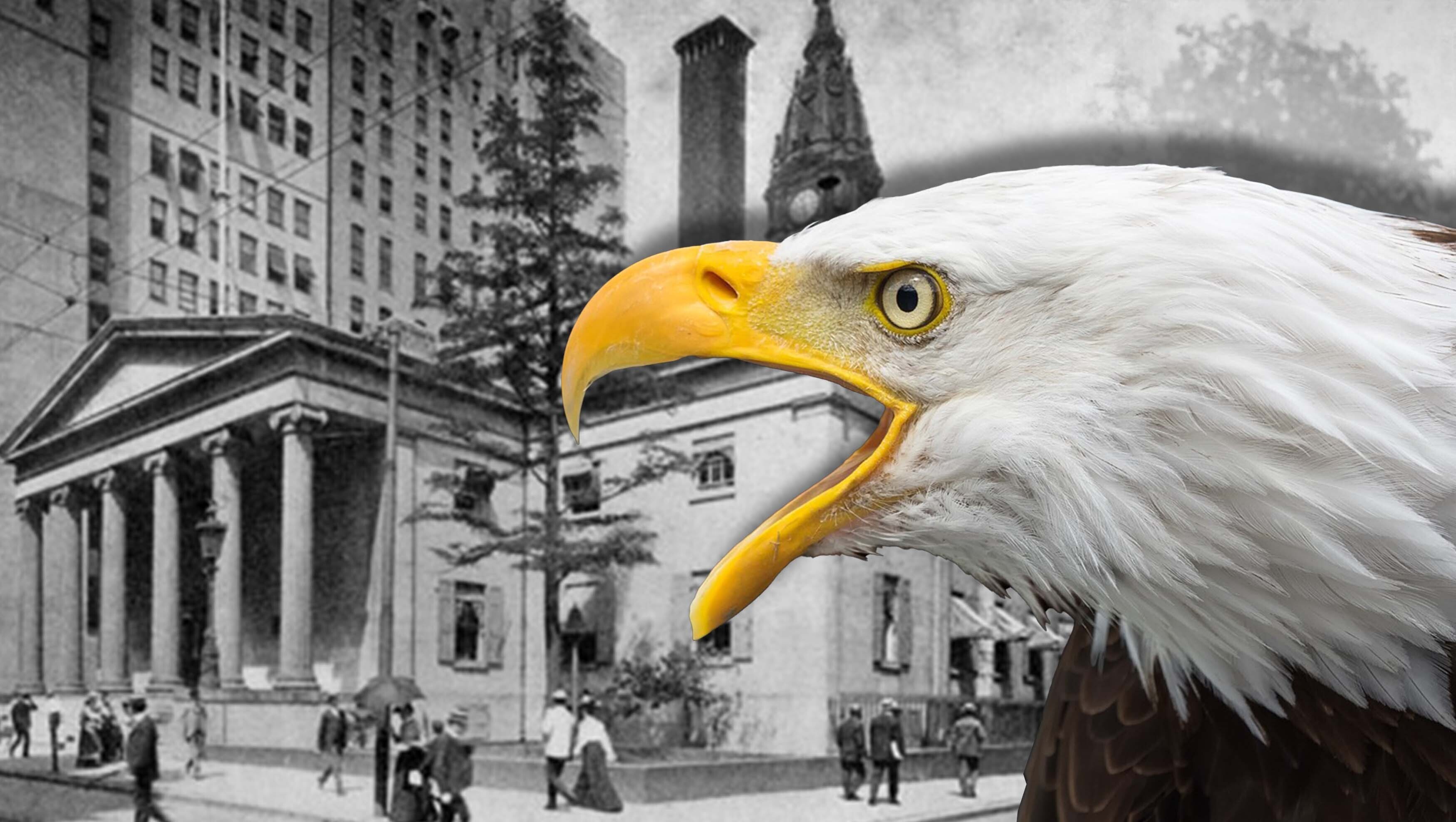Peter the Eagle: The U.S. Mint’s Unofficial Pet Bird
Did you know that several US Coins patterned their Bald Eagle after an actual pet bird that hung around the U.S. Mint? Peter the Eagle was an unofficial employee of the Mint in Philadelphia from 1830-1836 and they immortalized their avian friend. In this episode, we talk about Ben Franklin, the Eagle/Turkey controversy in the decision to honor a “National Bird,” and then play the quiz game with Comedian Jonathan Burns!

There’s a long-standing myth about Benjamin Franklin. Over time, this story developed about Ben Franklin and America’s National Bird, The Bald Eagle. The story goes that Franklin fought for the national bird to be the Turkey instead of the Eagle. And while there’s never record of him ever fighting to change the national bird, we know exactly where it came from.
In a letter to his daughter, Franklin once criticized a depiction of the Eagle. He didn’t like the way the Eagle looked on the Great Seal of the United States. Franklin and John Adams were on a committee whose job it was to come up with the Great Seal and in 1782 a man named Charles Thomson, who was the Secretary of the Continental Congress, came up with the design that we know and use today: a Bald Eagle holding arrows in one claw and an olive branch in the other. In a letter to his daughter, Benjamin Franklin criticized the artwork of the seal, particularly as it pertained to the depiction of the Eagle. This was a letter to his daughter Sara Bache on January 26, 1784. He wrote to her that people thought the Eagle on the Seal looked more like a Turkey than an Eagle. And he went on to criticize eagles themselves. He wrote, “Bald Eagle…is a Bird of bad moral Character. He does not get his Living honestly…[he] is too lazy to fish for himself.” Later in the letter, he actually continues, “the Turkey is a much more respectable Bird, and… a true original Native of America…He is besides, though a little vain & silly, a Bird of Courage.” That’s the extent of Franklin’s recorded thoughts on the matter. On top of that, scholars at the National Archives say that the letter was never actually sent. It was written while he was in France, and was never sent home to Philadelphia. Instead, it was given to André Morrellet, a French contemporary of Franklin, to translate into French. He did so, and advised Franklin about ever making the letter public – not because of the eagle/turkey situation, but because the letter was written as a satire and the entire thing was supposedly a joke. So this letter was never read until after Franklin’s death by anyone other than his grandsons, which he showed the writing to.
That’s a lot of insider info to say that no – Ben Franklin never actually fought for the eagle to be replaced by the Turkey. Not in any official capacity outside of a satirical letter that was never sent.
The Bald Eagle was chosen as the national bird because they often patterned themselves after the Roman Empire. In the Roman Empire, eagle imagery was common – in that case, usually the Golden Eagle. With the creation of the Great Seal in 1782, the Eagle became the symbol we see today. And since then, it’s been seen on seals, symbols, and currency, including countless coins.
At this point in the story, we skip forward 50 years.
50 years after Franklin wrote that letter in Paris, the U.S. Mint was humming in Philadelphia. It had been producing the nation’s coins for 38 years and it was now 1830. The President was Andrew Jackson and the U.S. had grown into a country of almost 13 million people.
Bald Eagles still inhabited the Philadelphia area back then. In the 1800s, there were around 400,000 Bald Eagles in the United States. For contrast, by the 1950s, this had been reduced to only 412 breeding pairs. But when Eagles were rampant – even in a large city like Philadelphia – one particular Eagle started flying around the Mint near 7th and Arch Streets. He would fly in during the evening and stay. This same Eagle came around so often, that the employees of the Mint gave it a name.
In 1830, the same Eagle kept visiting the corner of 7th and Arch Streets in Philadelphia at night. The Eagle would often perch on the building and come morning when employees would come in to work, he would be chased away. It would fish in the Delaware river during the day and return the next night.
We don’t know why he kept returning to this area. The Mint was just a few blocks West of the Delaware River, but it’s likely that a local business had some good food scraps. After awhile, the employees at the Mint named the Eagle. They called him Peter.
Now for some reason, they started letting Peter fly inside the windows of the Mint and he could soon be found perched inside the building almost all the time. Peter became sort of an unofficial mascot of the Mint – which is funny, considering he was basically the official mascot of the country and his species had already been depicted on numerous coins. He was considered an “exemplary employee of the US Mint.” On any given day, Peter could be found literally perched on the large coin presses and other machinery. Everyone knew and loved the bird. They would feed him scraps and take care of him. And this went on for 6 years!
In 1836, Peter was perched on the flywheel of a coining press and the press operator didn’t see him. He started up the machine and the Eagle’s wing became caught in the wheel. The wing was broke and he was cared for the best they could, but he couldn’t be saved. Sadly, their 6-year employee Peter died.
If you ever take a look at a Silver dollar – the Gobrecht Dollar – issued between 1836 and 1839, the design of the Eagle is supposedly based on Peter. The same is true of the Flying Eagle cent of 1857 and 1858. It was a way to pay homage to this bird they had become close to.
There’s another way they honored their friend. After he died, employees gave Peter’s body to a taxidermist to be stuffed and he was put on display with outstretched wings in the lobby of the U.S. Mint. This tradition has been continued to this day. Every time Philadelphia built a new Mint, the stuffed Eagle was put on display in the lobby. You can still see Peter the Eagle today in the lobby of the Mint, over 150 years later. The Internet says it’s true.

Review this podcast at https://podcasts.apple.com/us/podcast/the-internet-says-it-s-true/id1530853589
Bonus episodes and content available at http://Patreon.com/MichaelKent
For special discounts and links to our sponsors, visit http://theinternetsaysitstrue.com/deals

